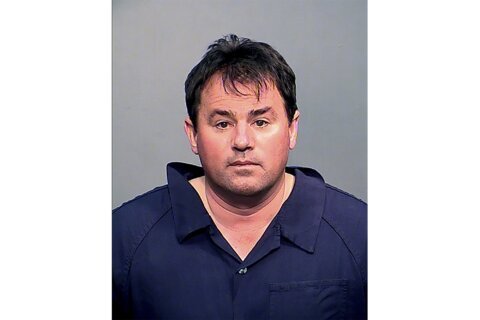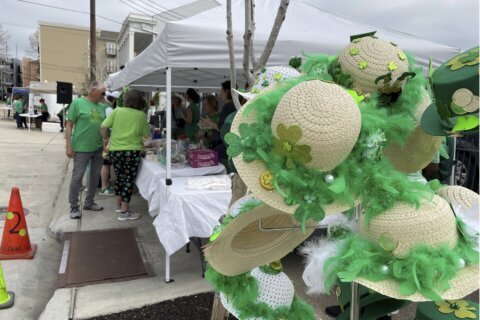You’ve read about Belize and Panama as ideal retirement destinations for anyone who dreams of island escape at this stage of life.
However, if warm trade winds and idyllic beaches fringed with coconut trees dominate your retirement daydreams, then your just-right “overseas” retirement haven could be right in your backyard.
Puerto Rico has been largely overlooked as an option for retiring away from the cold winters and hectic pace of northern U.S. climes, yet for many Americans, this island could be the ideal getaway that is as easy to retire to as Florida or Phoenix.
[Read: One Couple’s Retirement Adventure in the Caribbean.]
Now is a particularly interesting time to consider Puerto Rico for two reasons. First, the local property market has been in a serious slump for nearly 10 years. Prices are down nearly 50 percent from their 2006 highs.
Second, since 2012, Puerto Rico has been courting mainlanders with a series of tax breaks that make it one of the most attractive tax havens in the world for U.S. citizens. If the idea of paying zero taxes on dividends and capital gains is appealing, Puerto Rico is worth a look now.
Retiring to Puerto Rico can be far easier than making a move to Ecuador or Nicaragua, for example, but don’t imagine Puerto Rico as a carbon copy of mainland U.S. cities such as Miami or Tampa Bay, Florida. It’s not. Retiring here, you’d need to be prepared for many of the same challenges and hassles that you’d face retiring to any foreign country.
That reality, though, should not dissuade you, and, in fact, the hassle factor associated with setting yourself up as a retiree in Puerto Rico should be significantly less than in any other tropical island haven you might be considering. Language, for example, should be less of a barrier than it might be elsewhere. Spanish is the dominant language, and all dealings with officialdom need to be conducted in the native tongue, but flawless English is widely spoken, especially in the tourist areas.
Thanks to the current tax benefits of living or retiring in Puerto Rico, this island is finally attracting attention. More than a thousand Americans, primarily high-net-worth retirees and people in the financial services sector in high-tax jurisdictions including New York and California, have moved to Puerto Rico in the last four years or so.
Columbus landed on Puerto Rico in 1493 and named it San Juan Bautista, but the name never stuck. The Spanish didn’t establish a firm foothold on the island until Juan Ponce de Leon, the man famous for his quest for the Fountain of Youth, founded the first settlement near what is now San Juan in 1508.
[See: How to Prepare for Retirement Overseas.]
Puerto Rico’s close ties to the U.S. go back to the years immediately following the American Revolution, when trade between the Spanish colony and the States grew to the point that the former became less and less important and the latter more so. Islanders declared their independence from Spain in 1868, but it was not to last.
The U.S. formally took control of Puerto Rico in 1898 following the Spanish-American War and the Treaty of Paris. The Foraker Act of 1900 established free trade between the island and the U.S. and placed Puerto Rico under the American monetary system and tariff provision. The later Jones Act of 1917 granted American citizenship to Puerto Ricans and provided them with protection under the Bill of Rights.
During the postwar World War II period, American economic influence on the island grew tremendously, to the point that the U.S. essentially controlled the island’s economy. In 1947, the American government gave Puerto Rico the right to elect its own governor, and Luis Munoz Marin was elected to the post. Six years later, the island was transformed from an American territory to a commonwealth, a status it still retains.
Commonwealth status links Puerto Rico to the U.S. through common citizenship, common defense, common currency and a common market. However, Puerto Ricans do not pay federal taxes and are denied voting representation in the U.S. Congress. Almost without exception, the same federal rules and regulations — everything from the Americans with Disabilities Act to water and air quality standards — apply to Puerto Rico as a commonwealth as to the mainland States.
Puerto Rico’s political status has always been a matter of much debate on both the island and the mainland. Four referenda have been held on the issue, and the latest, in 2012, was the first in which a clear majority (61 percent) favored statehood. Puerto Rico’s legislature called on the Obama administration and the U.S. Congress to act on the referendum and resolutions have been introduced in both U.S. chambers, but none made it out of committee. Another vote is expected but not scheduled, so the island’s status remains in limbo.
For anyone considering moving to the island, all the back and forth is relevant. If Puerto Rico were to become a state, it would no longer qualify for territorial tax incentives.
However, you should not make the decision where to retire — to Puerto Rico or anywhere else — based solely on any associated tax benefits.
When you consider Puerto Rico beyond its tax advantages, here are other pluses you find:
Getting to the island could not be easier. All major U.S. carriers offer direct flights from the North American hubs, as do most of the low-cost carriers, and several European airlines offer direct flights from the continent. Further, U.S. citizens do not even need a passport to travel to Puerto Rico, only a state-issued photo ID.
The climate is typically Caribbean. Temperatures average 82 degrees year-round, with an average minimum temperature of 67 degrees and a maximum of 85 degrees. The south part of the island is usually a few degrees warmer than the north, and temperatures in the central interior mountains are always cooler than elsewhere on the island. Rainy season stretches from April to November, and the summer months are more humid than the winter ones. Note that hurricanes are a constant threat during the late summer and early autumn, when the island receives about a quarter of its annual rainfall.
Old San Juan is one of the best-preserved Spanish-colonial quarters in the Americas. You’ll find cobblestone streets, wrought-iron balconies, ancient churches and streets with names like Nun’s Staircase (“Escalinata de las Monjas”). Many of the buildings date to the 16th and 17th centuries, and sections of this quarter are surrounded by massive walls and forts.
Those who call it home say living in San Juan is not much different than living in a midsize city on the mainland. Big-box retailers are located on the outskirts in strip malls that could as easily be in Atlanta or Albuquerque. There are gyms and sports facilities, symphony and popular concerts galore, dozens of museums and several universities. Public transport (mainly buses) is not terribly good, with the exception of a new 10-mile rail system dubbed the “Tren Urbano” with 16 stations between Bayamon and Hato Rey that costs $1.50 (75 cents for seniors).
Real estate values are seriously depressed. Prices began to drift downward in 2004 and 2005 when lending rules changed, and they went off a cliff following the 2008 crash. The market still hasn’t recovered. Even in the upscale neighborhoods of San Juan, you see abandoned homes and apartment buildings, often adjacent to new ones. If Puerto Rico were a state, it would rank only behind New Jersey in terms of home foreclosures.
[See: 10 Affordable Places to Retire Overseas in 2016.]
This can translate to good news for anyone shopping for a home on the island today. You can buy a three-bedroom, two-bathroom home not far from the beach in San Juan that sold for $177,000 six years ago for $100,000 today, or a you can buy a home in gated communities in San Juan that sold for more than $1 million only a few years ago for $400,000.
One-bedroom condos in the heart of San Juan, with their own security and private trash collection, can go for $160,000, and three-bedroom homes go for $230,000.
It’s definitely a buyer’s market.
Kathleen Peddicord is the founder of the Live and Invest Overseas publishing group.
More from U.S. News
50 Affordable Places to Buy a Retirement Home in 2016
10 Ways to Reduce Your Housing Costs in Retirement
10 Alternatives to Full-Time Retirement
Puerto Rico: an Ideal Retirement Haven Right in Your Backyard originally appeared on usnews.com







